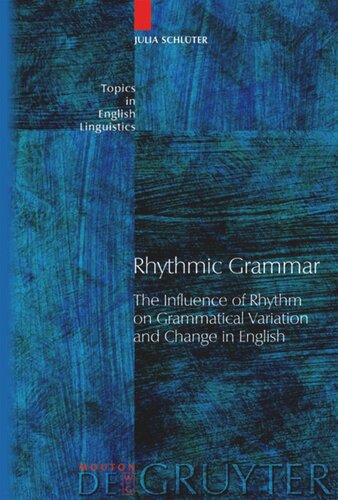

Most ebook files are in PDF format, so you can easily read them using various software such as Foxit Reader or directly on the Google Chrome browser.
Some ebook files are released by publishers in other formats such as .awz, .mobi, .epub, .fb2, etc. You may need to install specific software to read these formats on mobile/PC, such as Calibre.
Please read the tutorial at this link: https://ebookbell.com/faq
We offer FREE conversion to the popular formats you request; however, this may take some time. Therefore, right after payment, please email us, and we will try to provide the service as quickly as possible.
For some exceptional file formats or broken links (if any), please refrain from opening any disputes. Instead, email us first, and we will try to assist within a maximum of 6 hours.
EbookBell Team

0.0
0 reviewsThis groundbreaking book highlights a phonological preference, the Principle of Rhythmic Alternation, as a factor in grammatical variation and change in English from the early modern period to the present. Though frequently overlooked in earlier research, the phonetically motivated avoidance of adjacent stresses is shown to exert an influence on a wide variety of phenomena in morphology and syntax.
Based on in-depth analyses of extensive electronic databases, the book presents 20 exemplary studies from different structural categories. Among them are much-debated as well as novel issues, including the double comparative worser, 'predicative only' a- adjectives, variant past participles, the placement of the degree modifier quite, the order of conjuncts in binomials, the negation of attributive adjectives and sentence adverbs, variable adverbial marking, the use or omission of the infinitive marker, and the a- prefix before - ing forms. The studies provide qualitative and quantitative evidence of the importance of rhythmic alternation in synchronic variation as well as diachronic change, without neglecting interactions with a set of competing functional tendencies. Thus, the book contributes essential aspects to the description and explanation of the phenomena considered, calling for a fundamental revision of current thinking about the interface between phonology and morphosyntax. In addition, the empirical findings are brought to bear on theoretical discussions of more general interest, yielding a critical assessment of the merits and limitations of two nonmodular linguistic theories: Optimality Theory and spreading activation models. The latter type is developed into a comprehensive conception integrating functional factors such as the Principle of Rhythmic Alternation in an overarching framework for language variation and change.
The wide range of subject areas covered makes the volume essential reading and a source of inspiration for linguists with interests as diverse as the phonology-morphosyntax interface, English grammar, the history of English, functional linguistics, Optimality Theory, as well as neuro- and psycholinguistics.